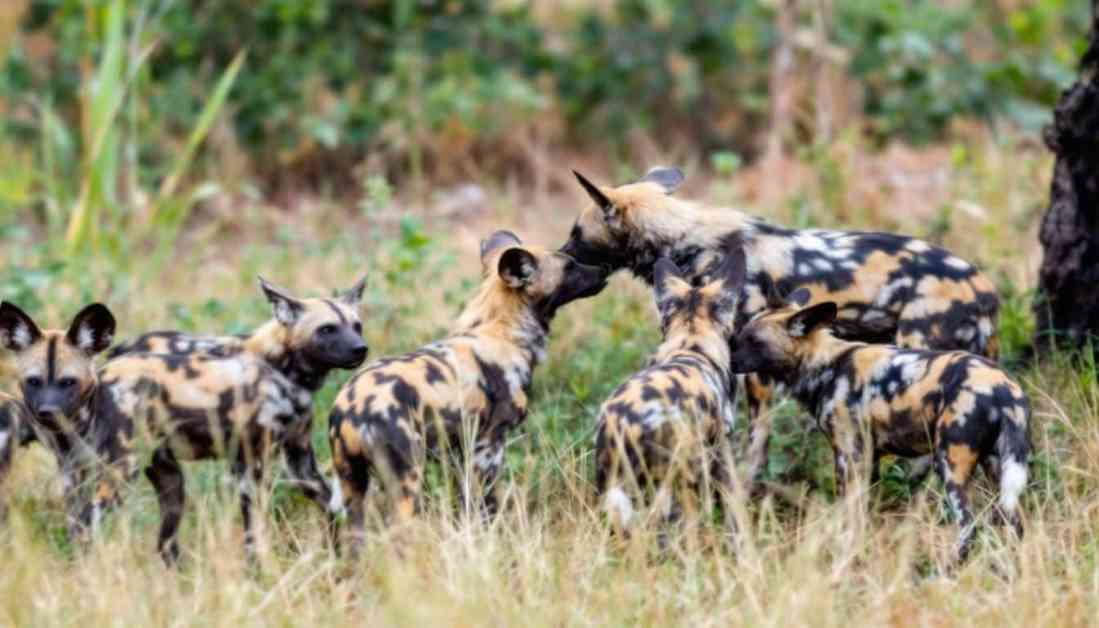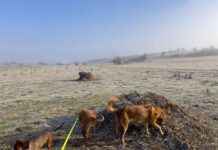African Wild Dog Conservation: A Journey of Hope and Challenges
African wild dogs, also known as painted wolves, are facing a critical situation across the continent. These endangered canines have long been victims of habitat loss and human conflict, pushing them to the brink of extinction. In this article, we delve into the current status of African wild dog populations and the innovative strategies being employed to ensure their survival.
African Wild Dog Population Status
Current Numbers and Distribution
Historically targeted as “problem animals” due to conflicts with livestock, African wild dog populations have been dwindling. The distribution of these unique animals spans fragmented areas across sub-Saharan Africa, with Southern Africa hosting the largest populations. However, West and Central Africa have seen a dramatic decline in wild dog numbers, leaving only isolated groups.
Major Threats to Survival
Habitat loss stands as the primary threat to African wild dogs, as human expansion encroaches on their natural territories. Additionally, snaring poses a significant danger, inflicting brutal injuries on the animals caught in them. These threats underscore the urgent need for conservation action to protect these remarkable creatures.
Recent Population Trends
While the overall trend shows a decline in wild dog populations, there are pockets of hope. Protected regions like Kruger National Park in South Africa have seen an increase in wild dog numbers, thanks to intensive conservation efforts. However, disease outbreaks like canine distemper continue to pose a threat, highlighting the vulnerability of these animals to infectious diseases.
Conservation Efforts Save African Wild Dogs
Tracking Technology Revolutionizes Conservation
The use of GPS collars has revolutionized African wild dog conservation efforts, allowing rangers to monitor their movements in real-time and respond swiftly to potential threats. Camera trap surveys provide valuable insights into wild dog behavior and pack dynamics, aiding researchers in understanding their habitat use and interactions with other species.
Community-Based Conservation Yields Results
Local community engagement plays a crucial role in wild dog conservation. Organizations like Painted Dog Conservation (PDC) have successfully engaged local communities in conservation efforts, reducing poaching activities and promoting environmental campaigns. Through anti-poaching efforts and education initiatives, PDC has made significant strides in protecting wild dog populations.
Education Initiatives Foster Long-Term Conservation
Conservation education programs, such as PDC’s Children’s Bush Camp, instill a sense of wildlife appreciation in children from a young age. These initiatives create a new generation of conservation advocates, ensuring the long-term survival of African wild dogs. The formation of new packs in places like Hwange National Park demonstrates the impact of these educational efforts on wild dog populations.
Technological Innovations in Monitoring
The use of drones and satellite imagery to map wild dog territories has enhanced conservation efforts, allowing for more efficient resource allocation and quicker responses to threats. Artificial intelligence and machine learning algorithms analyze camera trap footage, providing researchers with valuable insights into wild dog behavior and dynamics.
What Hinders African Wild Dog Conservation?
Human-Wildlife Conflict
Human-wildlife conflict remains a significant obstacle to African wild dog conservation. As human populations expand, conflicts with wild dogs escalate, leading to retaliatory killings by farmers. Conservation efforts focus on strategies like improved livestock management to address this issue.
Habitat Loss and Fragmentation
Habitat loss and fragmentation pose a severe threat to wild dog populations, requiring conservation groups to establish wildlife corridors between protected areas. These initiatives aim to connect fragmented habitats and facilitate the movement of wild dog packs between isolated regions.
Disease Outbreaks
Disease outbreaks, particularly canine distemper and rabies, continue to threaten wild dog populations. Vaccination programs for domestic dogs in areas bordering wild dog territories have shown promise in reducing disease cases in wild dogs.
Limited Resources and Funding
Conservation efforts often face challenges due to limited resources and funding, impacting the effectiveness of protection programs. Financial constraints sometimes force conservationists to prioritize certain aspects of their work, potentially leaving gaps in protection efforts.
Lack of Public Awareness
A lack of public awareness about the plight of African wild dogs hampers conservation efforts. Education programs and media coverage play a crucial role in raising awareness and garnering support for wild dog conservation.
Final Thoughts
African wild dog conservation has made significant progress, thanks to innovative strategies and community engagement. While challenges like human-wildlife conflict and habitat loss persist, efforts to protect these unique animals continue. Supporting conservation organizations financially and spreading awareness about wild dog conservation are vital steps towards securing their survival for future generations. Every contribution brings us one step closer to ensuring the well-being of African wild dogs and the ecosystems they inhabit.





















